Are you tired of making the same decision every time you go to the grocery store, whether to buy organic or conventional products? This decision process can lead to what is known as “Decision Fatigue”. Welcome to this month’s blog which will hopefully help you decide once and for all what is best for you and your family – conventional food or organic food – and is it worth the extra cost to buy organic?
First I will highlight differences of growing conventional foods with growing organic foods. Then I will explain what “USDA Organic” means and what the other labeling options mean when the term “Certified Organic” is used for a product. I will also show how other factors of conventional and organic farming can affect us. Lastly, I will list the top 12 products for 2024 that should be purchased organically, based on annual testing results from Environmental Working Group (EWG).
Food Production
When thinking about growing food, the main components are soil, water, air, sunlight, and seeds or plants. Even a backyard garden requires attention to the quality of soil, quality and amount of water, amount of sunlight, and watching out for pests. Now move this operation to large-scale food production. The components are basically the same, but the methods for implementation will change.
Two methods of large-scale food production that are used today are “conventionally grown foods” and “organically grown foods.” The infographic below highlights the main characteristics of the two.
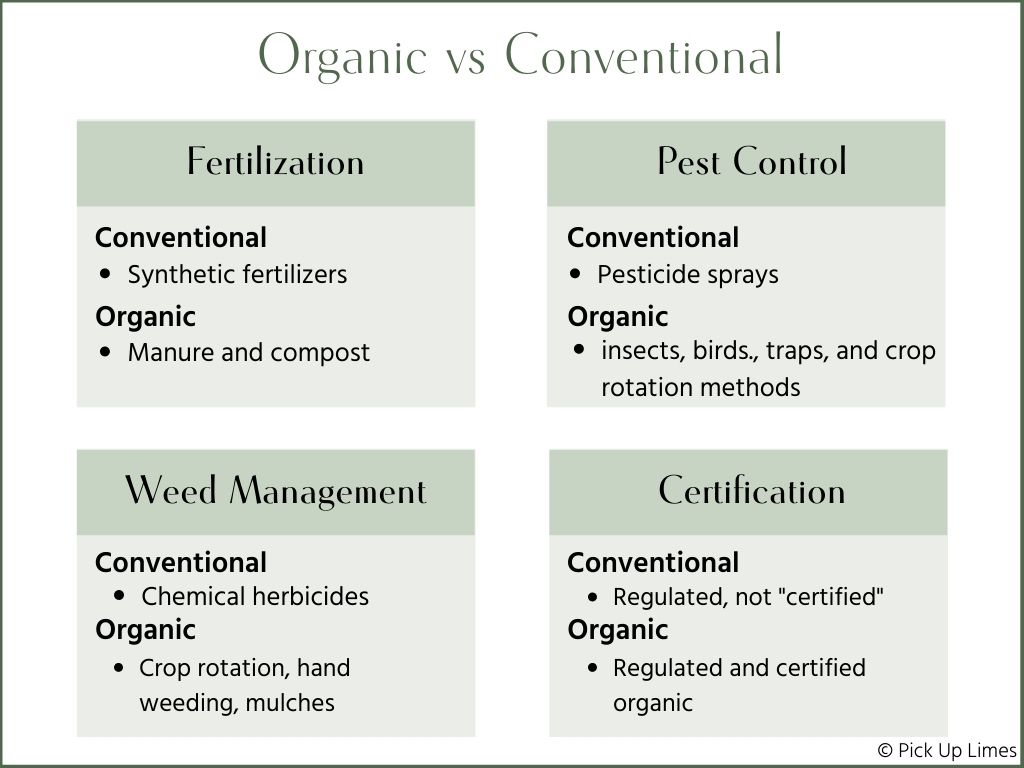
What does "Certified Organic" mean?
Around the world, “Certified Organic” can have different meanings and certifying agencies. This article will focus on the meaning and process found in the United States. The National Organic Program (NOP) is the federal program that develops and enforces national standards for organically produced products sold in the United States. NOP accredits 3rd-party organizations that certify farms and businesses and works with United States Department of Agriculture (USDA) to enforce these standards. Bottom line is that if a product is to carry the USDA Organic seal, the farmer, rancher or producer must go through a lengthy process to get certified.
The USDA Organic seal (logo) can only appear on products that are certified as such. If a product claims to be “Made with organic ingredients,” it means at least 70% of the ingredients are certified organic. However, this level of labeling cannot use the USDA Organic seal. Only products containing 95% or higher certified organic ingredients can use the seal. In addition, if a product has the USDA Organic seal then the product or any of its components cannot be genetically modified (GMOs).
Four Versions of Organic Labeling
Requirements for Different Types of Organic Products
Organic products can be fruits, vegetables, nuts, grains, meat, dairy, eggs, and packaged goods (cereals, pasta, etc.).
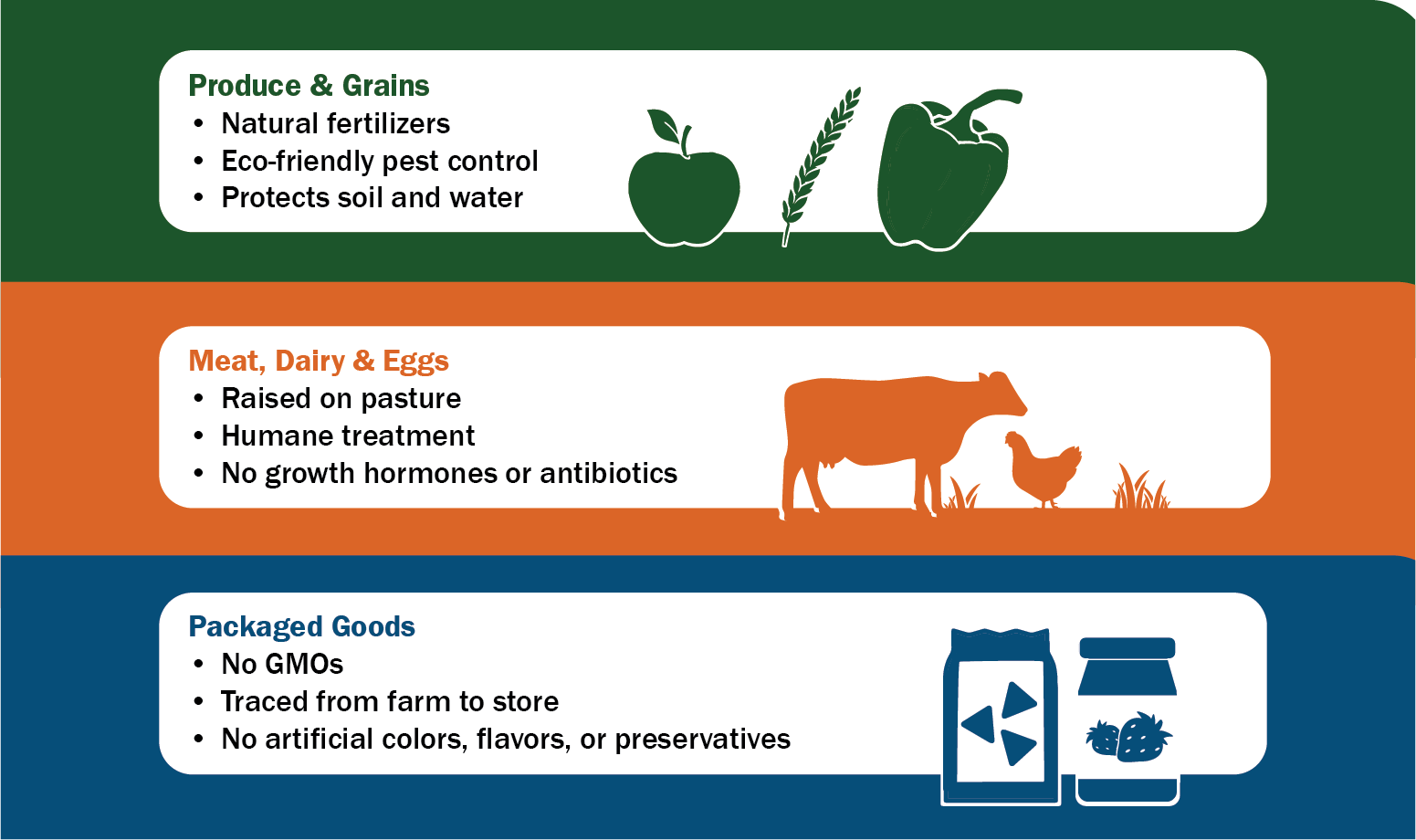
Infographic taken from Resources for Consumers and Retailers at USDA site
Pesticides
A pesticide is a substance used to destroy insects or other organisms harmful to plants or to animals. The term pesticide includes herbicides, insecticides and fungicides. There ae over 800 pesticides registered for use in the United States. Since there are so many in use, we are all exposed to low levels of pesticide residue around schools, homes, workplaces, parks and other common areas. In addition, pesticides can get inside our bodies from eating, drinking, breathing them in and through skin contact.1
There are more than 200 studies led through National Institute of Environmental Health Sciences that have linked pesticides to risk for diseases including Parkinson’s, thyroid, kidney, rheumatoid arthritis, and shingles. A recent EWG peer-reviewed study found a toxic crop chemical in four out of five people tested. This study tested urine samples of people from 2017-2023 and found the toxin in more people and at higher concentrations in 2023 as compared to earlier years.2
How does the use of pesticides affect our food’s nutrition, the land that the food is grown in, the workers who handle this land and food as well as the ecosystem surrounding this land? Synthetic pesticides and fertilizers can damage and pollute water and soil. Farm workers and their families have some protections under the EPA’s Agricultural Worker Protection Standard (WPS). The goal of this program is to have a healthier workforce, fewer lost wages, less medical bills and lesson absences from work and school, which is a good start. Healthy soil, clean water, and clean air are the foundations for healthy growth and development for all living things. This is especially true for agriculture. Advocating for the protection of these critical environmental essentials continues to be my mission.
The idea of farming with pesticides reminds me of a science experiment from my middle school days using white carnations placed in cups with different colors of water. After several days of absorbing the colored water, the flowers take on the color of the water. Imagine that each cup of colored water is a different chemical used in conventional farming practices. Wouldn’t each plant absorb the chemical? Do I want to ingest a strawberry from a plant that has been drawing on chemically tainted water?
Besides the “ick factor” of tainted water being used in food production, there is some research showing organically grown foods are more nutritious! They have been found to have higher concentrations of antioxidants and significantly higher vitamin and mineral contents. One meta-analysis study found that consumers who switch to organic fruits, vegetables, and cereals would get 20-40% more antioxidants. That’s the equivalent of eating two extra portions of fruit and vegetables a day without actually eating them! Antioxidants have been shown to help prevent many chronic diseases including neurodegenerative diseases and certain cancers.3

Organic Food Priorities
As you will find in the store, organic foods cost more and aren’t always as available as conventionally grown foods, so I am including a list of foods to prioritize for organic purchases. According to a June 9, 2022 Consumer Reports article4, the top priority should be produce with meat and dairy following in importance.
The Environmental Working Group (EWG) puts out an annual list of their Dirty Dozen™ foods. These are foods that have been found to have high pesticide residuals. The 2024 list was just released March 20th, so hot of the press is their list. If it is listed as a Dirty Dozen™, it is best to purchase organic versions of it.
EWG's 2024 Dirty Dozen™
Other Labels and Terms
It would be helpful to have a structure of government incentives and supports that favors sustainably produced food. That is not the current structure in the United States. In the meantime, I believe that people who can pay the higher price for sustainably produced food must do so to build the market for these goods.
When buying food, look for labels that require verification and inspection such as:
-
- USDA Organic
- Non-GMO Project Verified
- Certified Naturally Grown
- Certified Grass fed by A Greener World
Some other terms lack clear standards, verification processes, or independent oversight, allowing farm conditions to vary widely across producers. Avoid vague terms and labels such as:
-
- “Natural”
- “Pesticide-free”
- “Free-range”
- “Humanely-raised”
- “Pasture-raised”
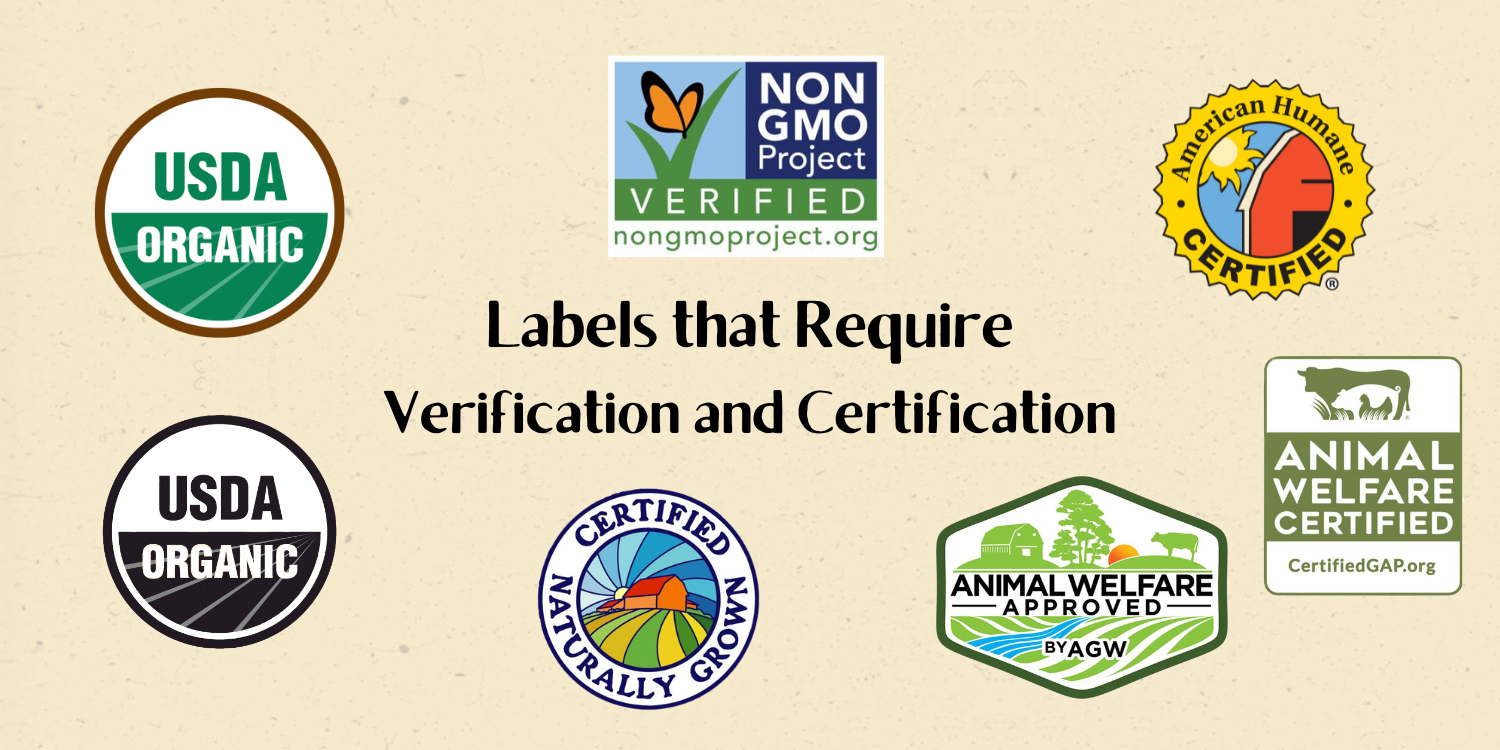
Next Steps
The next time you go to the grocery story, don’t forget to bring your list of organic food priorities. Also, look for the official USDA Organic labels and be confident you are making healthier choices for you and your family, thereby doing away with decision fatigue once and for all. Is organic worth the expense? There is no right or wrong answer however, it is a question that each of us can ponder based on our priorities and values.
Note: If you feel inclined to do more, here is a link to easily advocate for polices regarding pesticide usage (scroll halfway down page).
Reducing Energy Consumption and Utility Bills-Part 1
Does a utility bill of $30/month for natural gas, electricity, taxes and fees sound desirable? Over the next two blogs...
Can E-bikes Transform Our Transportation?
How many of our households have a dedicated gas-powered vehicle for each driver? What if our new normal became one car...
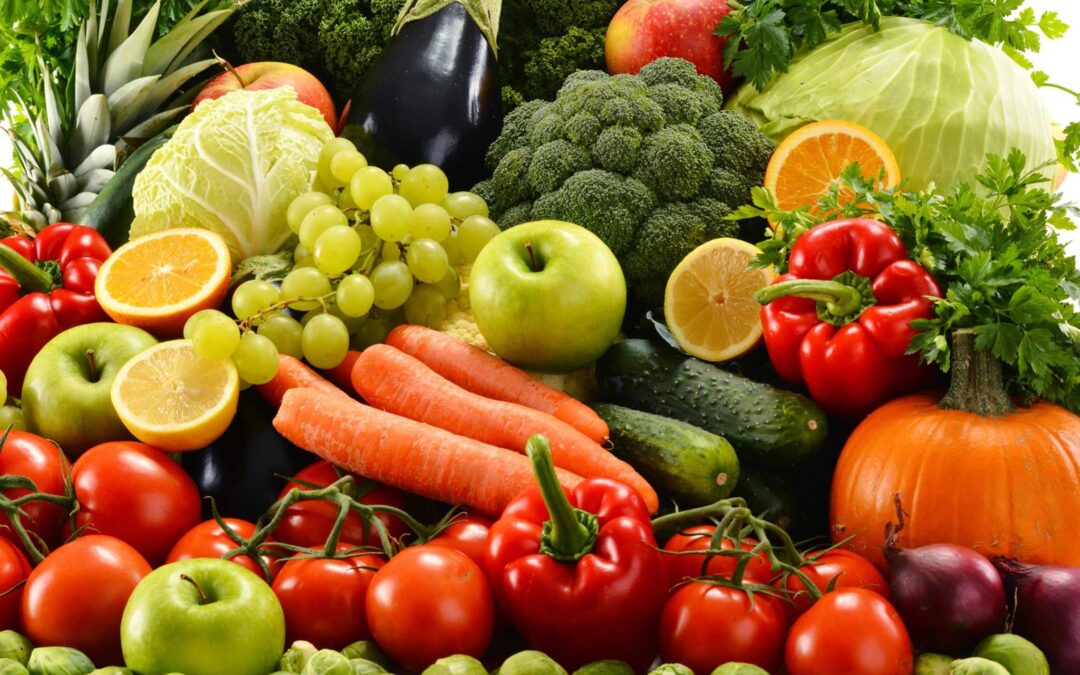
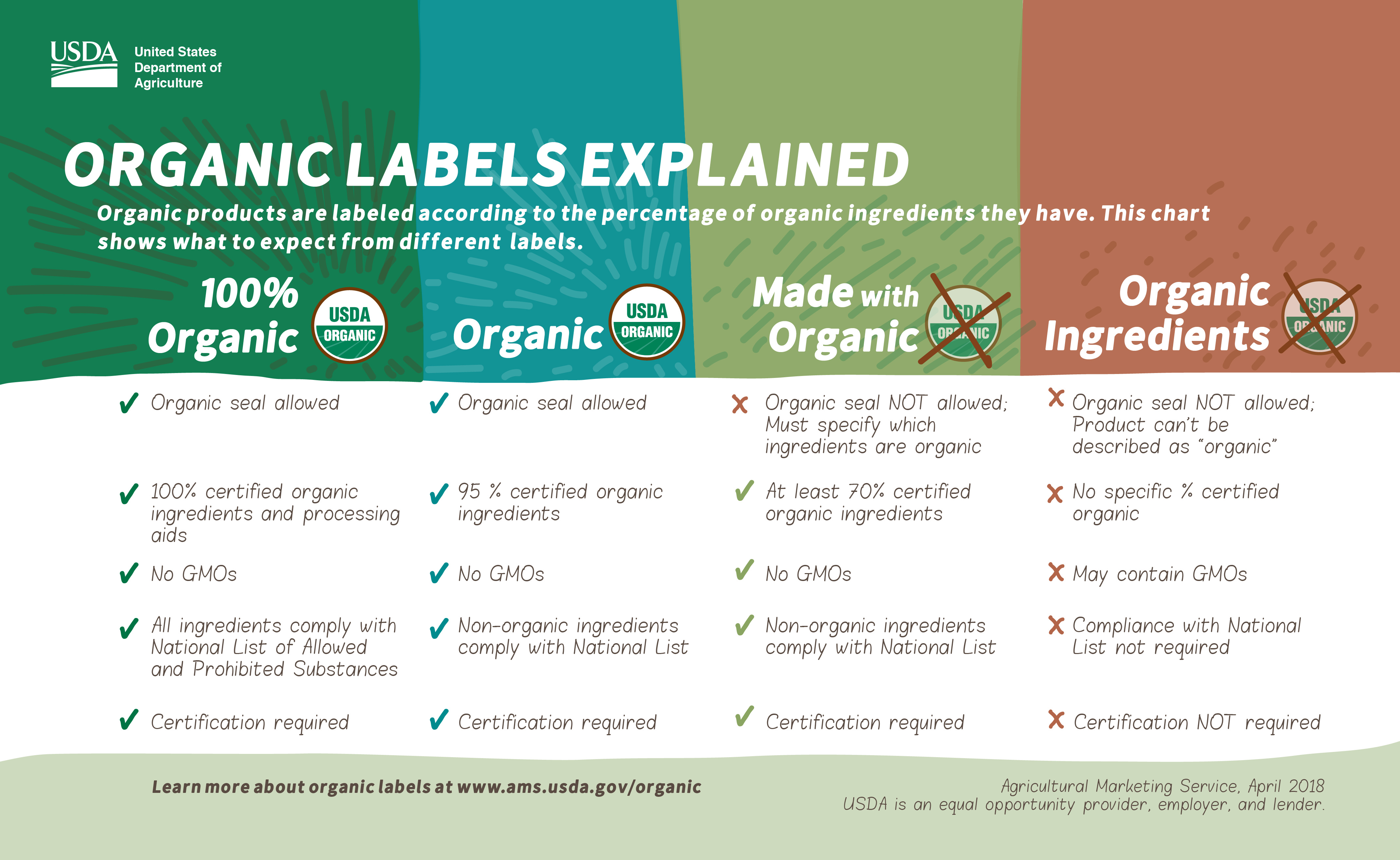
Thank you for another important lesson. I find that organic produce often tastes better as well.